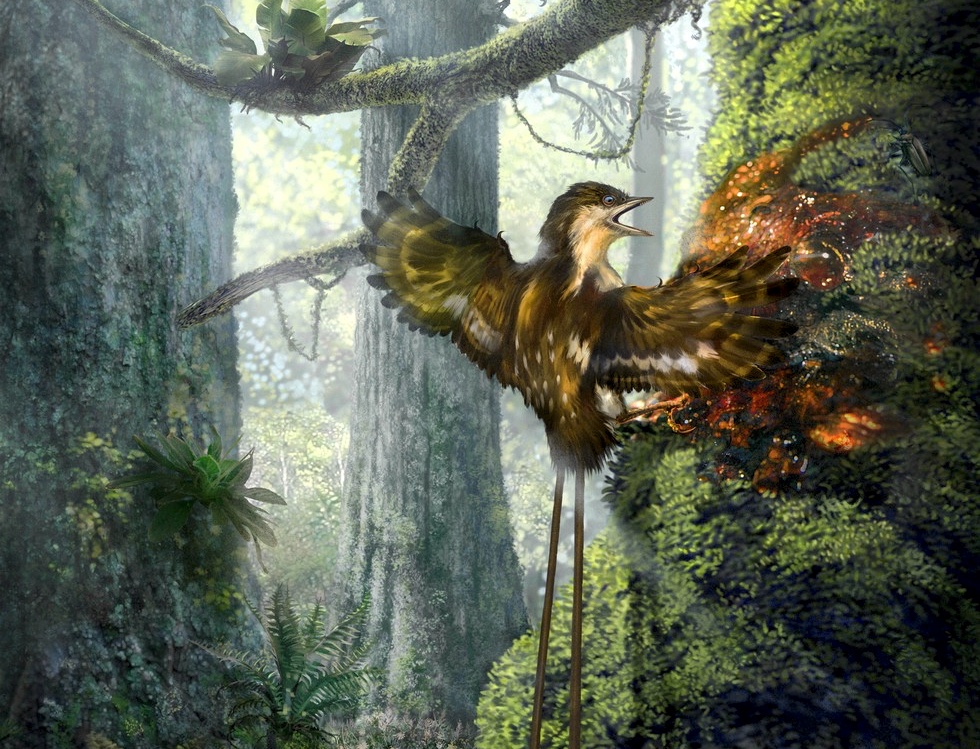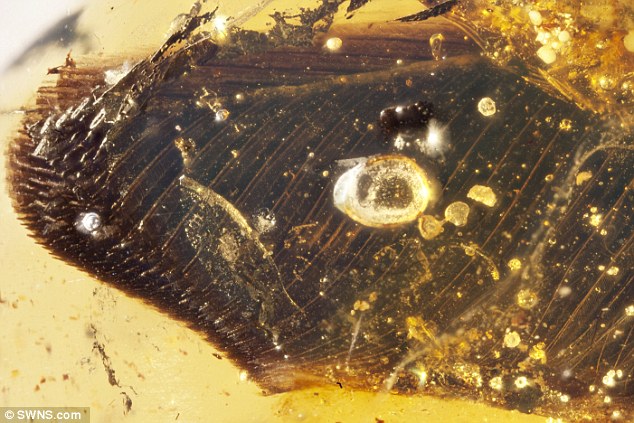So far, the feathers of animals of the Cretaceous period – from 66 to 145 million years ago – managed to study only the most meager sources. As a rule, evidence of the time – it’s almost flat prints in sedimentary rocks or fragments of feathers, which was impossible to set any details, including the species of their extinct owner
.
The more valuable specimens of ancient amber were found in the famous deposits in northwestern Burma and dated the age of almost 100 million years. For the first time at the disposal of paleontologists were two perfectly preserved specimen containing and feathers and parts of the skeletal remains – the wing bones, including sharp claws to cling to trees. The first results of the study team of scientists from China and Canada, published in the journal Nature Communications .
The researchers report that feathers partially preserved even its original color: light the underside of the wing, pale spots on a dark brown background the rest of the. The structure of the feathers and wing anatomy already at that time was generally the same, some birds survived to our time. Dimensions as these birds do not reach up to hummingbirds: most likely a young representatives enantsiornisov, large and dominant in the Cretaceous bird group still retains the teeth
.

Enantsiornis caught in the resin / © Chung-tat Cheung
In the background is not yet fully evolved bones feathers look already “older” and, according to paleontologists do not contain traces of past molts. One of the samples even contain full flight feathers. This shows that the pen cover enantsiornisov formed much faster than it does with modern birds. Perhaps they became independent very quickly after hatching from the egg. It happened with these calves: soon after birth, they went to explore the world, but died in the ancient resin zavyaznuv
.

© Royal Saskatchewan Museum / R.C. McKellar
No comments:
Post a Comment